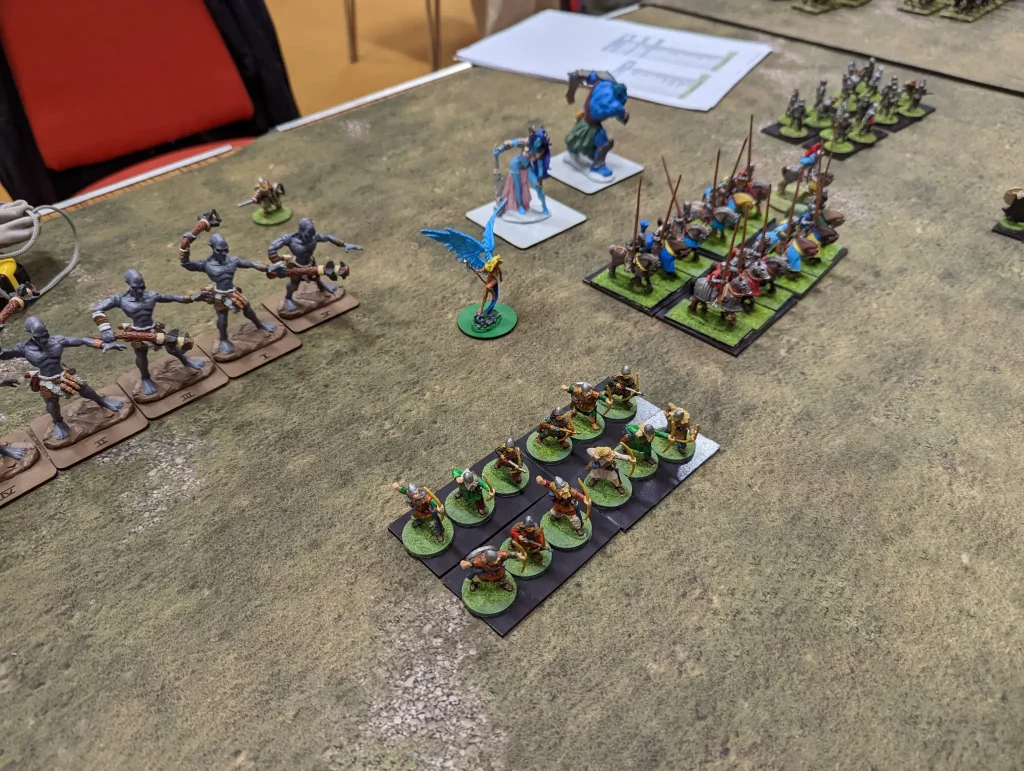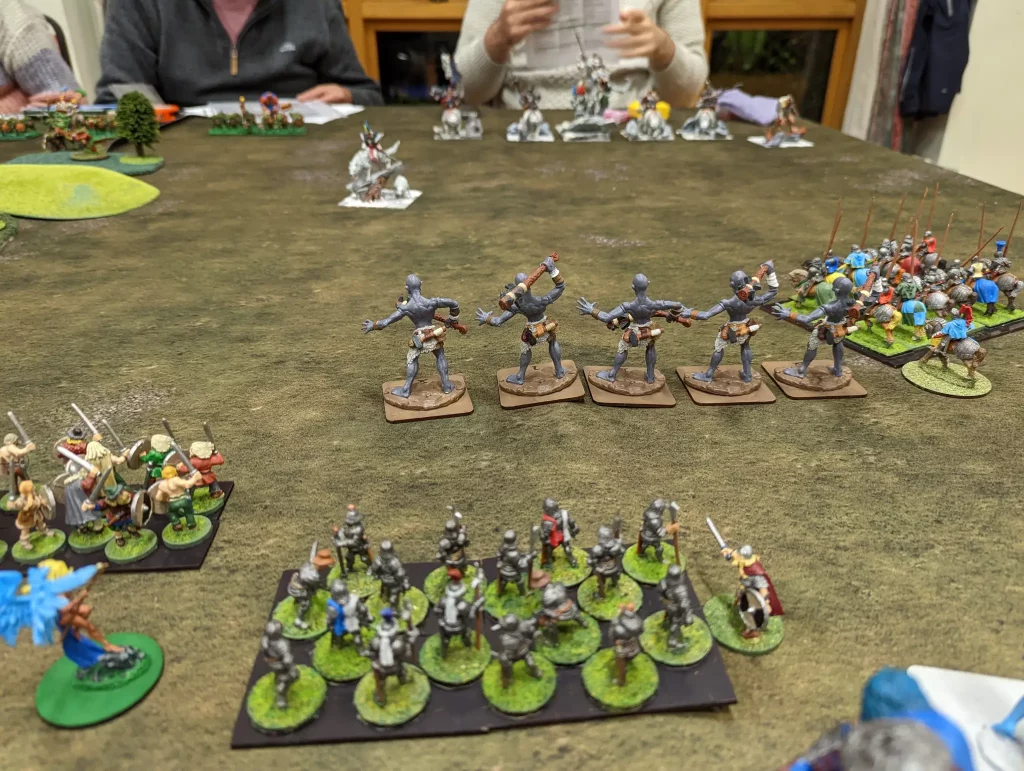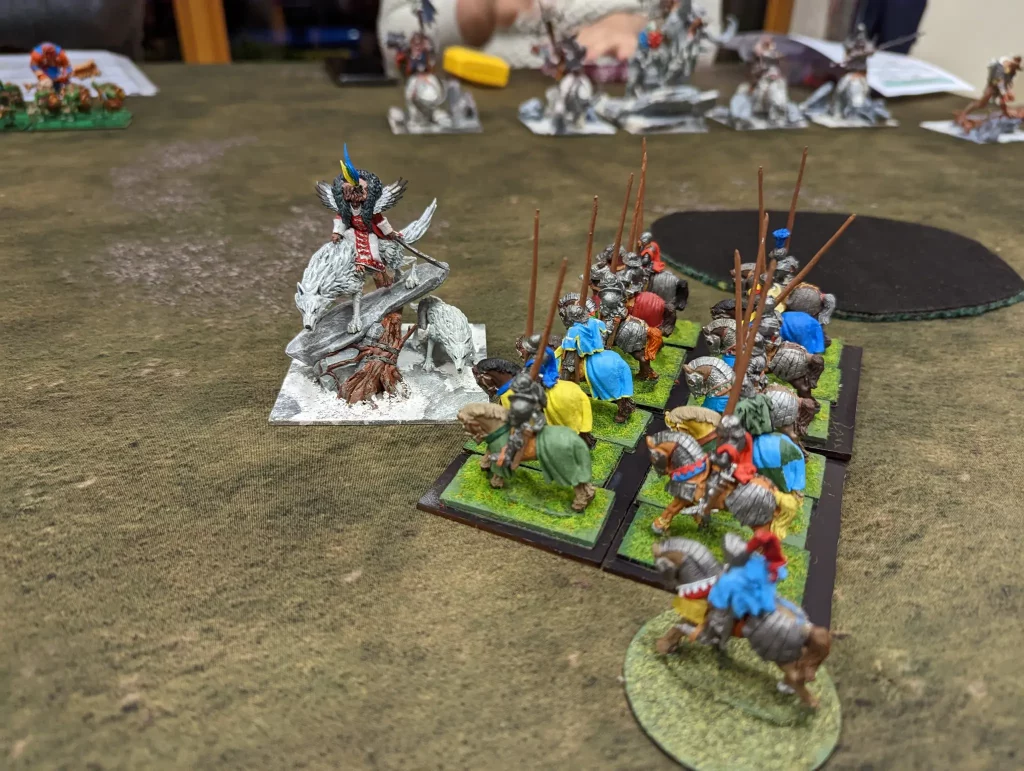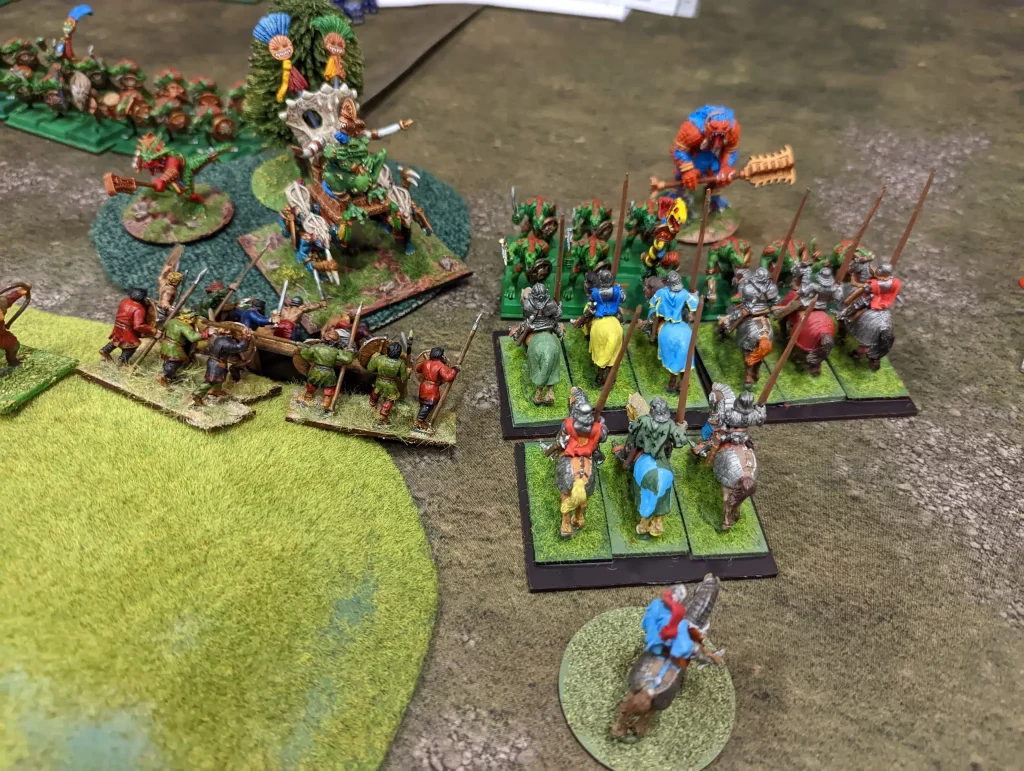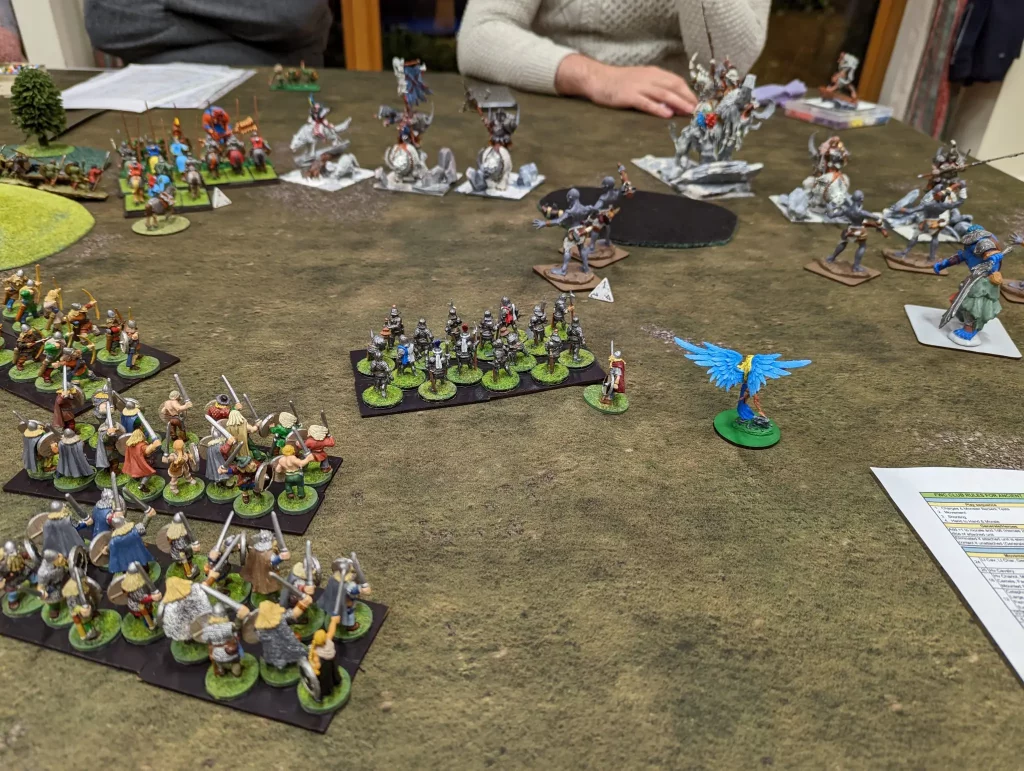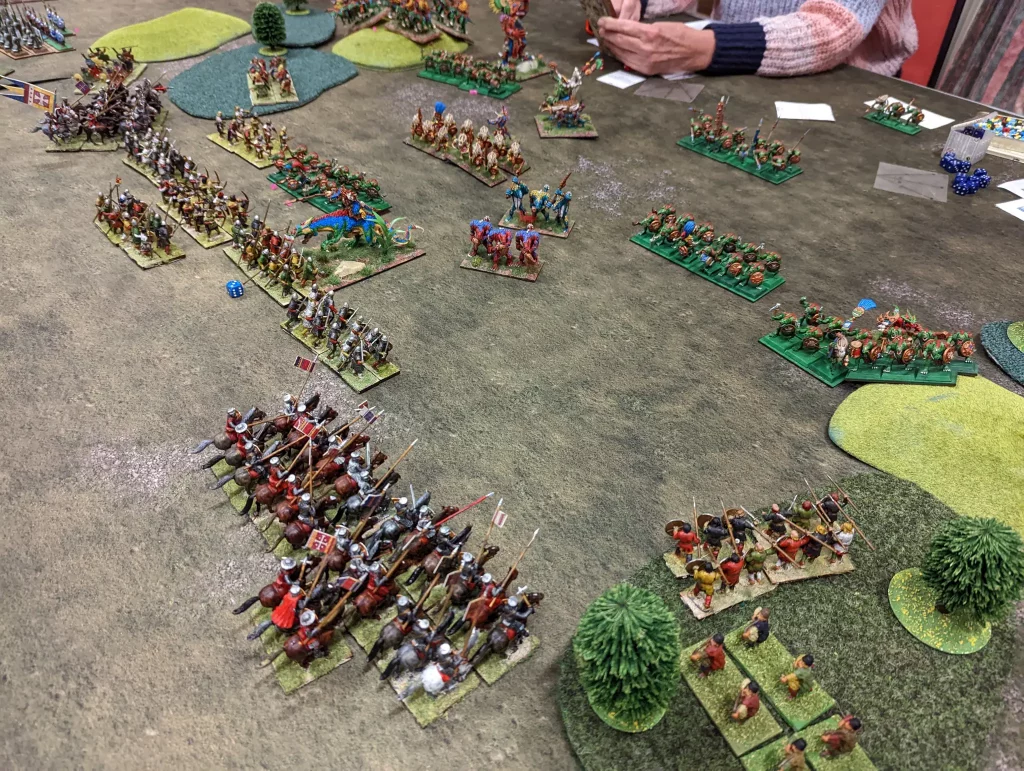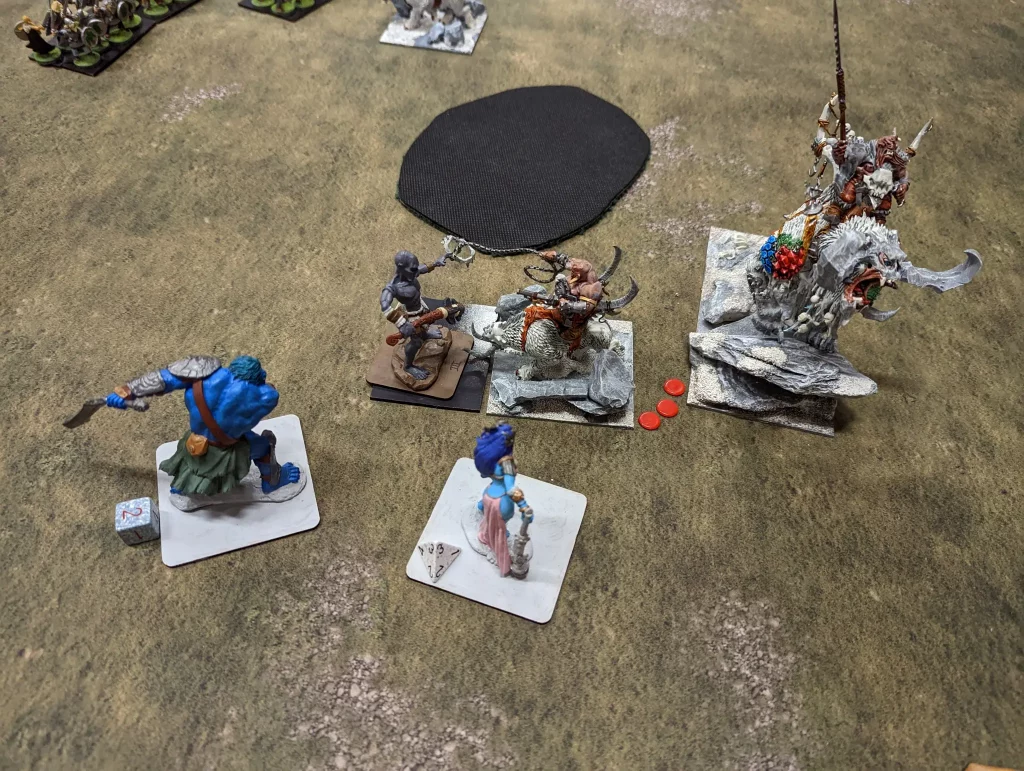Battle of the Six Armies
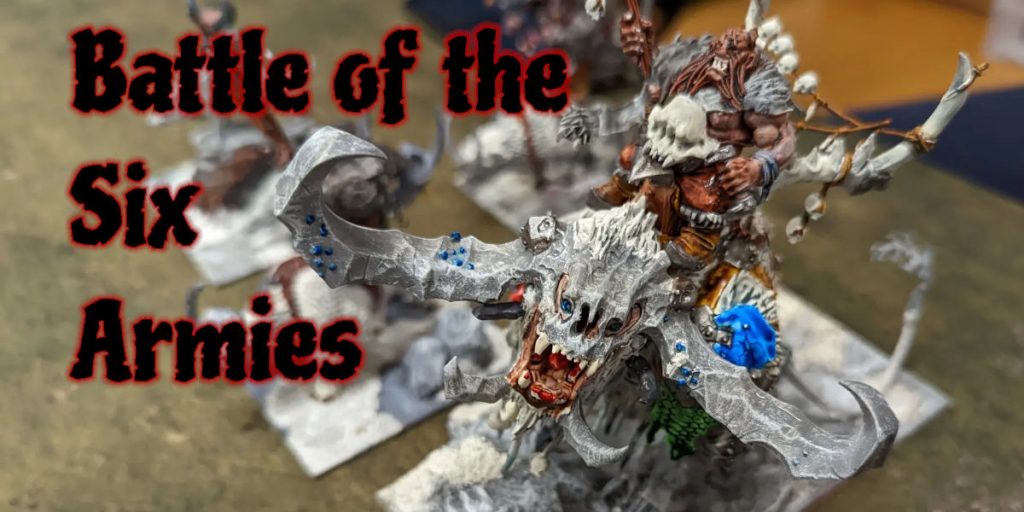
This week it was time for another fantasy game, this time 28mm using the custom rules developed at Farnborough Wargames. This was another new game to me, and since I hadn’t had time to plan much during the week due to being swamped with other things, I ended up bringing some random figures and sorting out what units I was going to use on the night with a bit of help from the others.
The fantasy rules are a variation on the club’s ancient’s rules (which seems to get played most weeks as far as I can tell) and are pretty well understood by the regulars. This means there isn’t a nice document which explains how it all works, but a number of spreadsheets of reference material which I personally find rather hard to parse. So I wasn’t entirely certain what I was doing for much of the game – I just moved my figures and rolled the dice. As it turned out, I really wasn’t very good at the latter.
This is another game where figures are based in groups rather than individually, and the biggest issue for me was going to be that all by figures are based individually. I put in an emergency order to WarBases, and they delivered – with a big box of 80mm wide bases turning up at lunch time on the day. I’d already added a metal layer to the bases of my figures, so I stuck magnetic basing material to the large unit bases in the hope that this would work. For the most part it did.
My army was based on a Great Kingdoms army I’ve been putting together for Saga Age of Magic, which is made up of late medieval knights from Wargames Foundry, some fantasy figures such as my flying sorceress and some Reaper Bones giants I’d originally purchased for use in my Pathfinder Rise of the Runelords campaign a few years back. I also had some dragons and other flying creatures, but this game had a no-flying units limitation.
This was going to be a big game of six different factions, so had the potential to be quite complicated. In the end, I was mostly squaring off against a single opponent and didn’t get much chance to interact with the other armies.
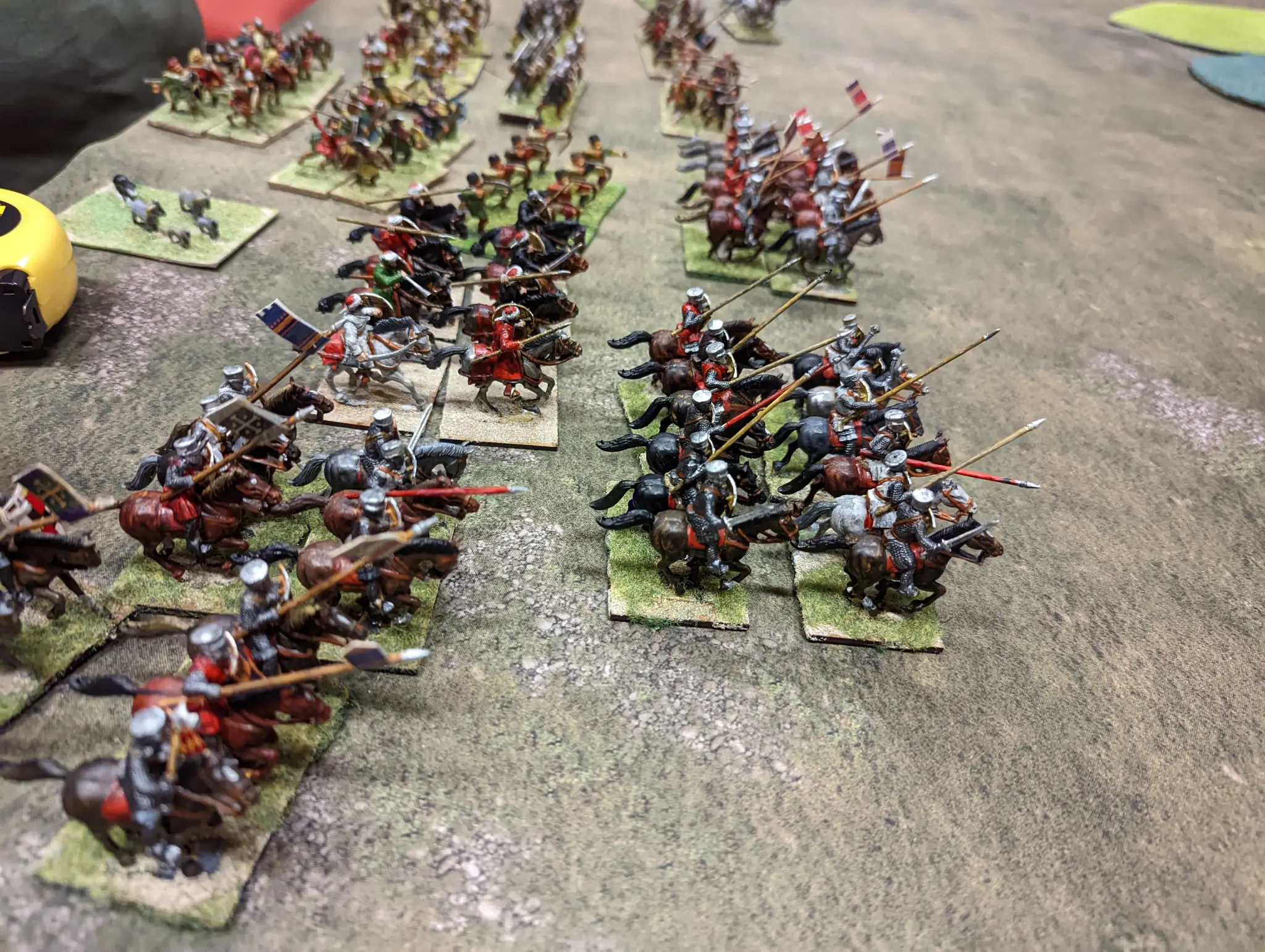

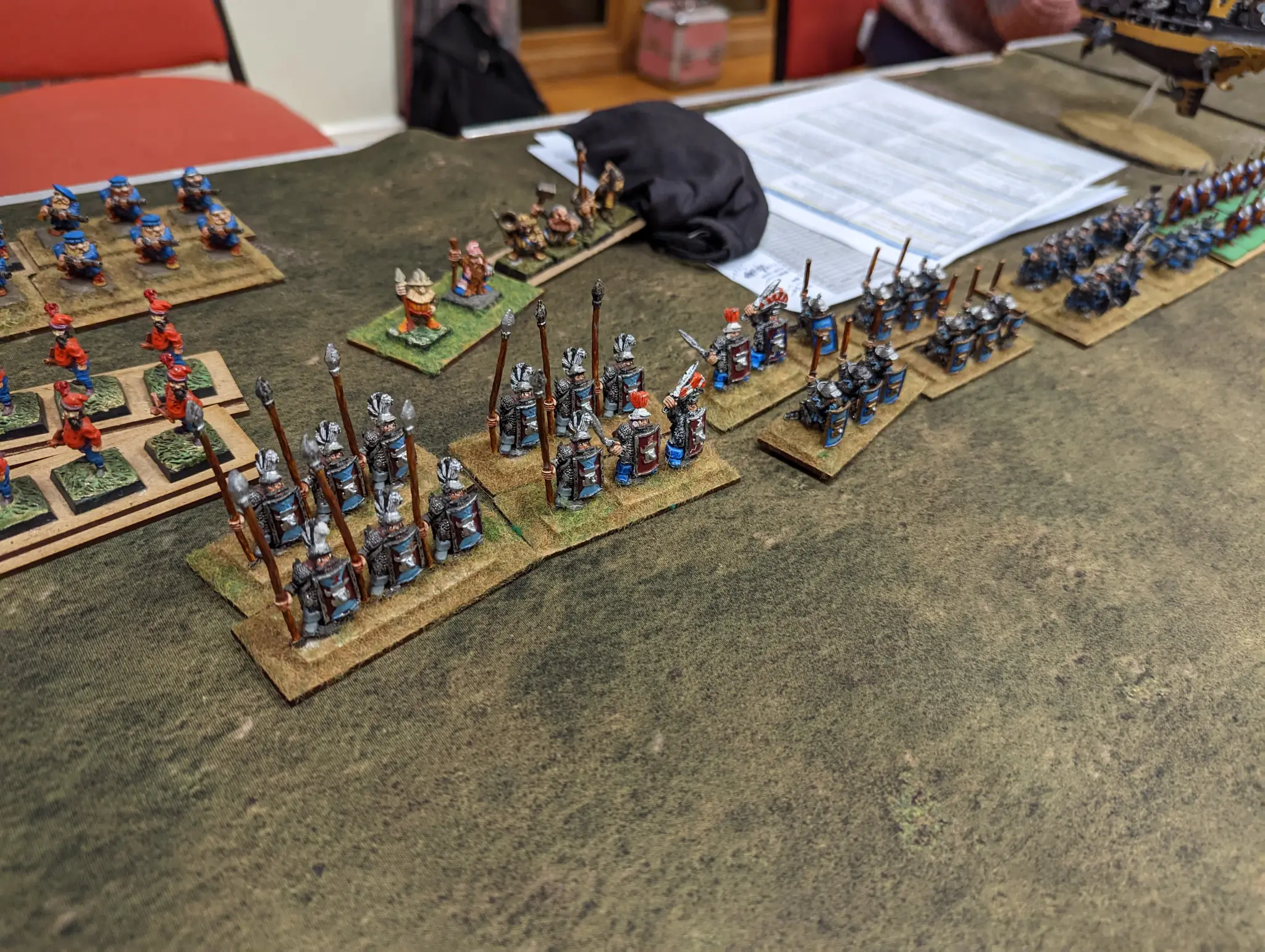
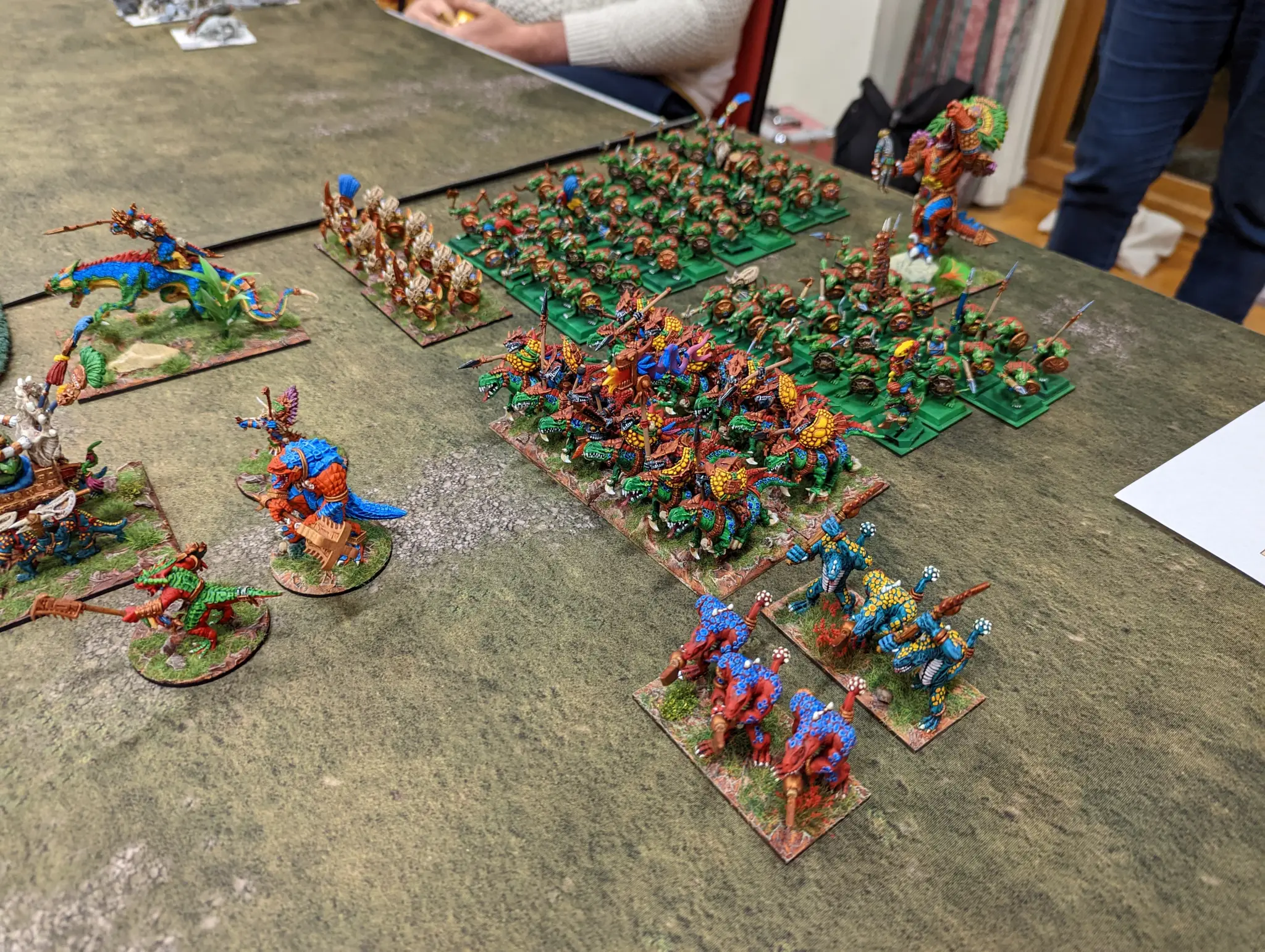

The elves and dwarves were down the far end of the table and I was mostly facing off against a band of winter monsters inspired by Polish folklore. Not only did they look scary due to their size, they also looked like pretty cool miniatures (I believe they were from Games Workshop). The lizards were also very eye catching, with their bright colours and rather impressive looking beasts.
The terrain was fairly open where I was (bottom left on the above image). The battle opened with my Great Kingdoms mounted knights charging forwards towards the beast army, though I didn’t actually want to engage their largest behemoth in melee.
My stone giants (large humanoids under the rules) also took the lead, though I didn’t have high hopes for their effectiveness against the large beasts ahead of them either.
I wanted to bring the cavalry around and to my left flank, to engage the lizardfolk infantry. To help in that, I made use of my first spell – Rock to Mud, which placed a large region of uneven terrain to the cavalry’s right flank, blocking the bulk of the beasts from attacking.
One enemy hero charged forward, forcing them into melee, but she was driven back. She was the only beast that had a fast move – all the others were incredibly slow.
My cavalry did get to engage the lizards, though they were tougher than they looked. We both took casualties, but my knights finally fell as the beasts came back in on their flank.
The pit though had broken them up, allowing my giants to engage on our right flank and keeping the giant behemoth from engaging. A repel spell forced the behemoth back so that it was blocked by the smaller monsters, and a fireball took out one of those. My stone giants were falling quickly after that though.
I had incredibly bad luck with dice. The exception was one stone giant who I expected to die quickly so that my cloud giant could step into melee, but he held out for much longer than expected.
Both the Kingdoms and the Beasts were losing units, and it turned into a war of attrition that ended up being quite evenly matched. Meanwhile, over on my left flank the Lizardfolk and Normans were meeting in an engagement, with the large lizard creature causing a lot of trouble.
By the end of the battle, the Great Kingdoms and Beast armies had more or less wiped each other out. The beasts were overwhelming in melee, but their small numbers meant that a war of attrition was going to be expensive for them.
Their slow movement also meant that they could have been vulnerable to ranged attacks. As it was, I only had a single unit of archers so couldn’t take advantage of that vulnerability. My allies to the left had sent around some javelin hurling light cavalry which managed to wear them down, but by the end it was more or less a draw.
Across the larger battlefield, there were similar results with a rough draw being declared. I’d had my hands full dealing with my own end of the table, so hadn’t paid too much attention to what had been going on elsewhere.
Other pictures from across the battle: The lizards and beasts were probably the most photogenic of the models, but all the armies looked good (though my cheap plastic Reaper Bones figures looked a bit outclassed).
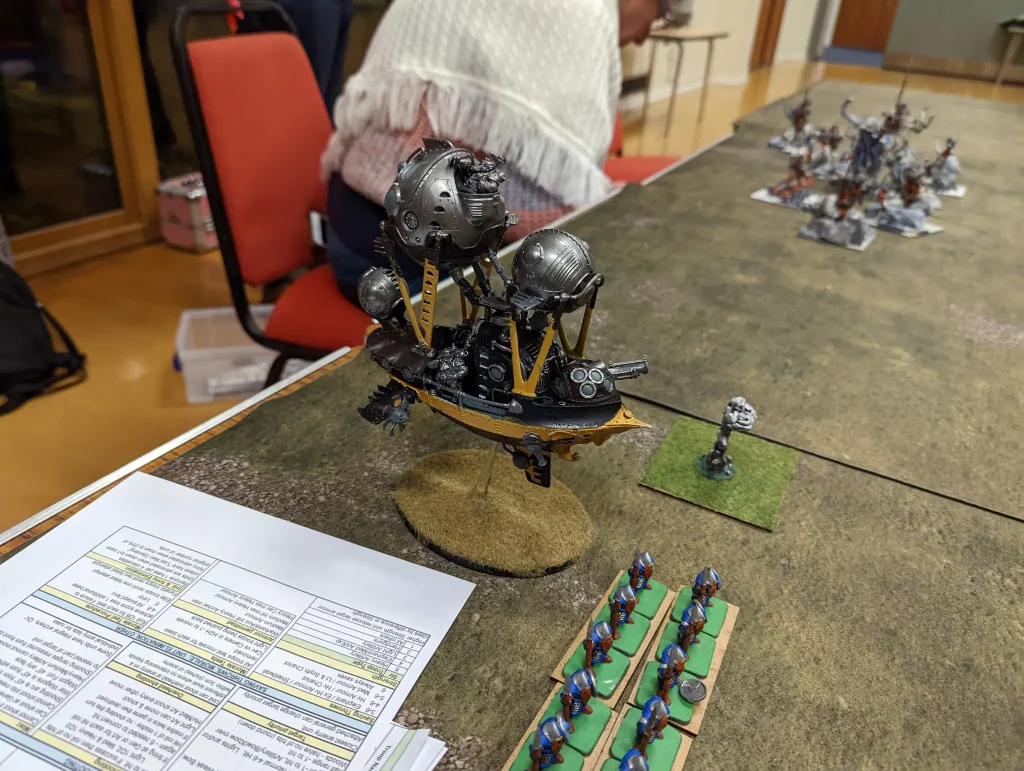
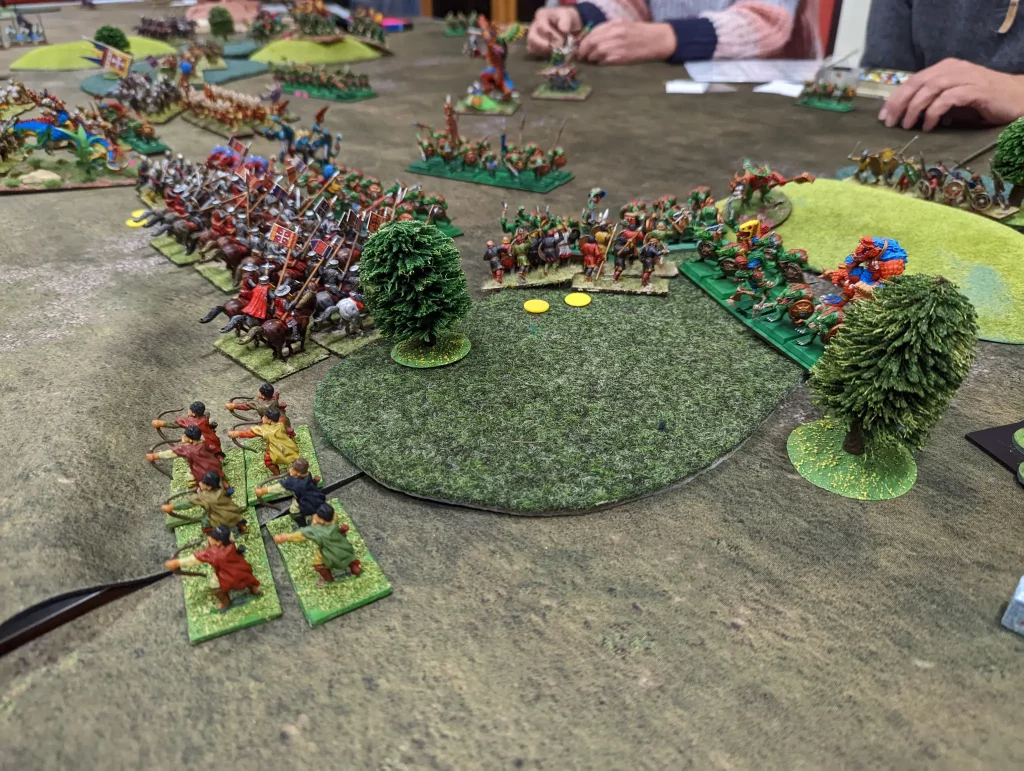

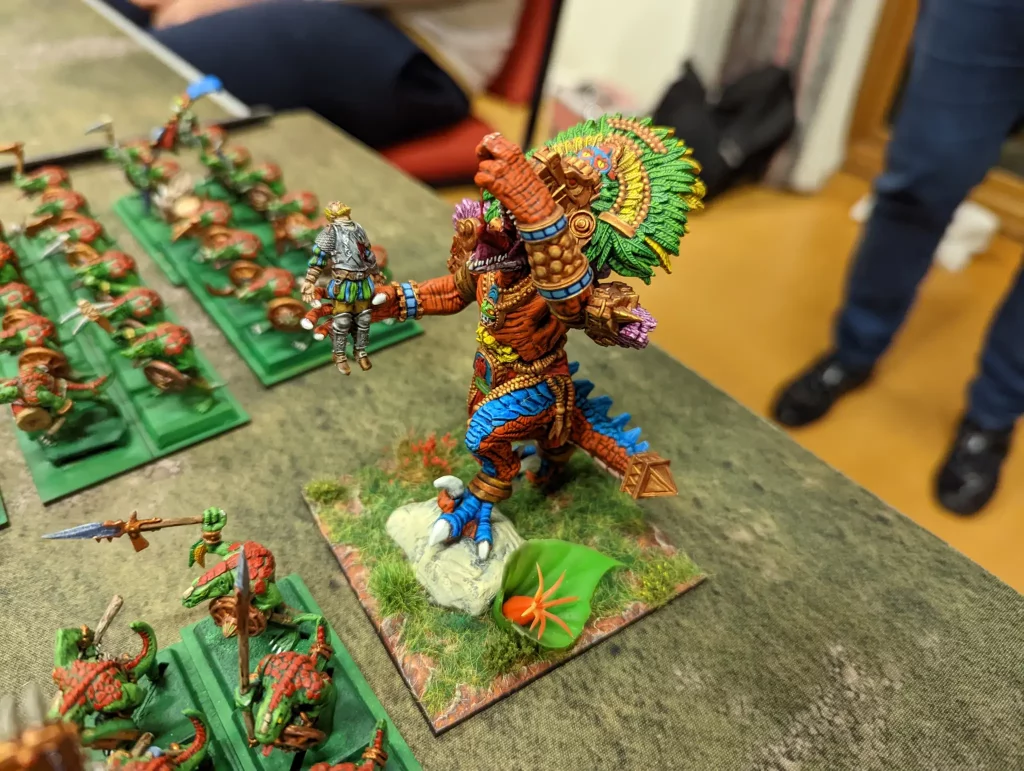
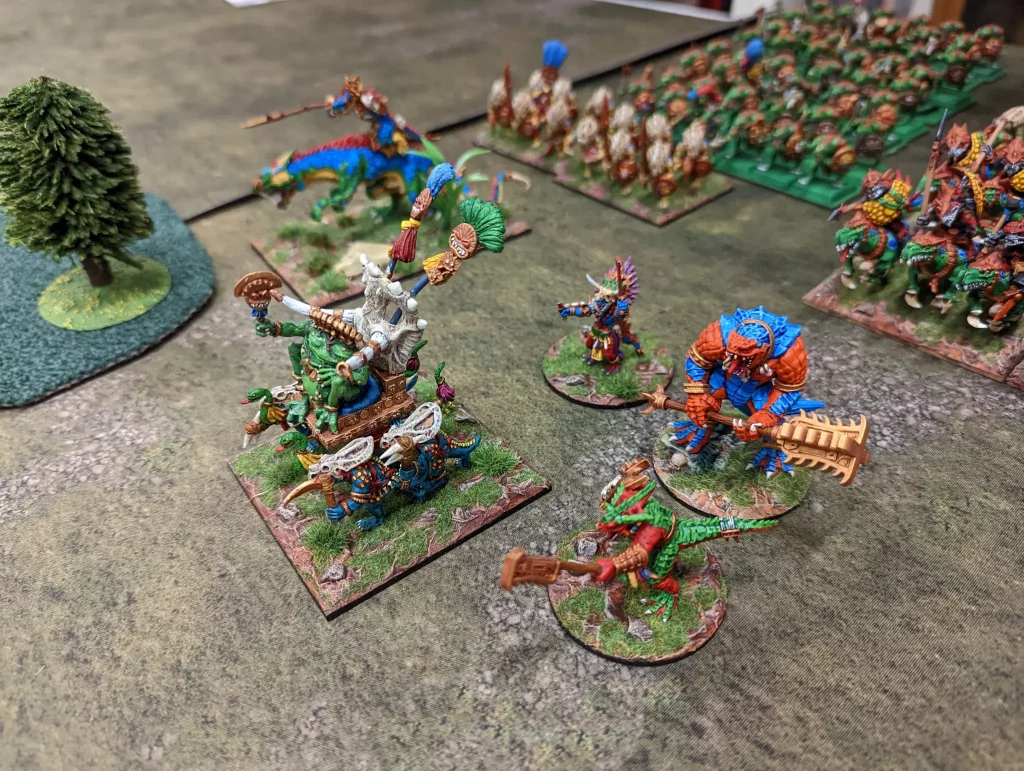
I had a lot of bad luck with the dice during the game. Plenty of times when rolling half a dozen dice and needing 4+, and getting zero success. Towards the end my luck changed a bit, but on the whole things didn’t go as well as they should have.
I was a bit unused to dealing with base facing, having played a lot of games recently (such as Saga) where facing wasn’t really an issue. Trying to ensure archers were facing the right way and getting infantry units to not block each other was something I failed at. There are no ‘turn’ or ‘fall back’ options, so some of the manoeuvres I’d tried to plan for didn’t happen.
In terms of building an army, the rules are more complicated than something like Saga. It’s a point buy system, and since I hadn’t had time to put together a detailed army, there were some confusion over exactly what I had. I think I would have made my knights elite units and try to give them as much armour as possible, to ensure they could actually stand up to things.
My mage was probably my most effective unit in terms of how I used them. Magi get four spells, and the four I chose all got used in a useful fashion. The rock to mud added in some much needed terrain to allow me to better control some things, a fireball took out a unit, a repel disorganised the enemy meaning I could concentrate on the ‘weaker’ units and speed managed to get a friendly cavalry unit into position at an effective moment.
I wasn’t paying much attention to my allies though, at least not as much as I probably should have been. A more varied fight may have been more interesting – as it was, it felt more like 3 separate battles, with a little bit of overlap at the edges.
I think my preference is more for the skirmish types of games like Saga, rather than the group basing games like this. It was a fun evening though, and I now have a better idea of how the rules work which might allow me to properly point up an army.
